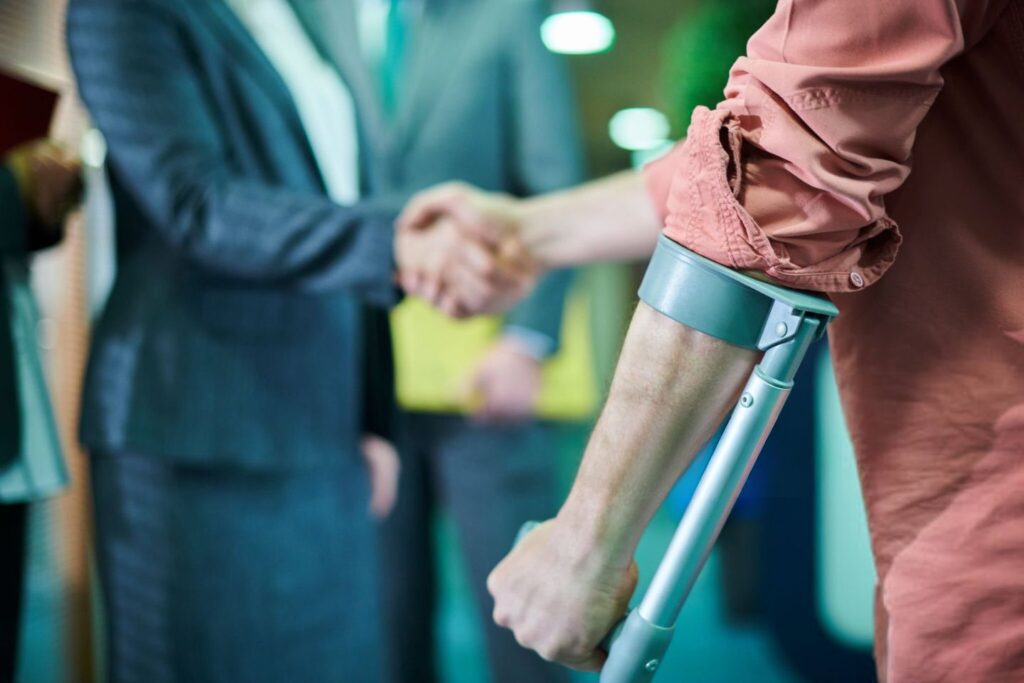Every year, countless lives are altered irreversibly due to vehicular accidents, particularly in California, where the sheer volume of traffic intensifies the risk. In 2021, California witnessed over 128,000 car crashes in urban and rural freeways and approximately 4200 fatalities. This staggering statistic underscores a silent epidemic of traumatic brain injuries, often overshadowed by immediate physical damage yet holding the potential to transform lives long after the incident.
This article delves into the long-term effects of traumatic brain injury sustained in vehicular accidents, shedding light on the silent battle many survivors face in the aftermath.
How Accidents Can Lead to Traumatic Brain Injury
Accidents, particularly vehicular collisions, are a leading cause of traumatic brain injuries. The sudden, violent jolt or impact can cause the brain to collide with the skull, resulting in bruising, tissue damage, or bleeding. Objects penetrating the skull, such as shattered glass, can also directly damage the brain. Additionally, rapid acceleration or deceleration can cause diffuse axonal injury, where the brain’s long connecting nerve fibers are torn. Each of these mechanisms disrupts normal brain function, leading to the wide array of symptoms and long-term effects associated with traumatic brain injuries.


Long-Term Effects of Traumatic Brain Injury
Traumatic Brain Injury is not just a singular incident but a starting point for a range of potential long-term changes that can affect various aspects of an individual’s life. The extent and nature of these effects can vary widely among individuals, but they often include the following:
Cognitive Impairments
After a traumatic brain injury, individuals might experience significant difficulties with cognitive functions. This includes problems with memory, where recalling past events or learning new information becomes challenging. Concentration issues might also arise, making it hard to focus on tasks for extended periods. Additionally, decision-making processes can be affected, leading to slower or less effective problem-solving skills.
These cognitive impairments can alter a person’s ability to perform daily tasks, impacting their work, education, and personal life. It might require adaptations in their living and working environments and support from family or professional caregivers.
Physical Challenges
Traumatic brain injuries often result in a variety of physical symptoms. Chronic pain can be a persistent issue, affecting the individual’s comfort and ability to engage in activities. Sleep disturbances and fatigue are also common, leading to a general decrease in energy and motivation. Additionally, some might experience issues with balance and coordination, affecting their mobility and increasing the risk of falls.
These physical challenges can limit an individual’s independence and participation in physical activities. They might require physical therapy, medication, or other interventions to manage these symptoms and maintain as much physical function as possible.
Emotional and Behavioral Changes
Personality changes are not uncommon after a traumatic brain injury. Individuals might find themselves more irritable, quick to anger, or prone to mood swings. Depression and anxiety can also develop or worsen, affecting the individual’s overall well-being. These emotional and behavioral changes can be distressing not only for the individual but also for their friends and family.
The emotional and behavioral changes can strain personal relationships and make social interactions more challenging. It might require psychological or psychiatric support, counseling, and strong family and community support systems to manage these changes effectively.
Social Repercussions
The cumulative effect of cognitive, physical, and emotional changes can lead to broader social repercussions. Individuals might find themselves increasingly isolated due to their inability to engage in community activities or maintain relationships as they did before the injury. This isolation can exacerbate other issues, such as depression and anxiety, creating a cycle that’s hard to break.
The social repercussions can significantly decrease the quality of life and sense of belonging. It might require concerted efforts from community organizations, healthcare providers, and the individuals’ personal networks to ensure they remain integrated and supported within their community.
Navigating the Road to Recovery: Treatment and Support for Traumatic Brain Injury Survivors


Recovering from a traumatic brain injury can be challenging, but with the right treatment and support, there’s hope for a better future. Understanding the potential long-term effects of a traumatic brain injury and exploring the available treatment options is crucial for survivors and their families. Here’s what the recovery journey might involve:
Rehabilitation Therapy
What It Is: A comprehensive approach involving a team of professionals like physical therapists, occupational therapists, and speech-language pathologists.
Purpose: These experts work together to help survivors regain lost functions and independence. Whether it’s relearning how to walk, improving hand coordination, or redeveloping speech and language skills, rehabilitation therapy is tailored to meet each individual’s needs.
Benefit: Focused on overcoming the long-term effects of a traumatic brain injury, this therapy can significantly enhance the quality of life and independence.
Medication
Role: To alleviate various symptoms such as pain, mood disorders, or seizures, doctors may prescribe specific medications.
Impact: While not a cure, medication can help manage the challenging aspects of recovery, making it easier for survivors to participate in therapy and daily activities.
Counseling and Support Groups
Emotional Healing: Recovery isn’t just physical. The emotional and psychological impact of a traumatic brain injury can be profound. Counseling offers a safe space for survivors to process their experiences and emotions.
Community Support: Support groups bring together survivors and their families, allowing them to share experiences, challenges, and coping strategies. This sense of community can be incredibly comforting and empowering.
Lifestyle Adjustments
Daily Changes: Small tweaks in daily routines and environments can lead to significant improvements. This might include setting up a more organized living space, using assistive devices, or establishing a consistent daily routine to reduce stress and confusion.
Long-Term Planning: Understanding and adapting to the long-term effects of a traumatic brain injury is key. This might involve career changes, modifications to the home, or finding new hobbies and activities that are more aligned with the individual’s current abilities.
Legal Avenues: Navigating the Aftermath of Injuries and Accidents in California


If you or a loved one has suffered from an injury or accident, like a traumatic brain injury, in California, understanding your legal rights and options is crucial. Here’s what you need to know:
Personal Injury Laws in California
In California, if you’ve been hurt because someone else was careless or negligent, like in a car crash leading to a traumatic brain injury, you have the right to seek compensation. This can cover medical bills, lost wages, and even pain and suffering.
These laws are there to protect you and ensure you’re not left struggling with the financial burden of an injury that wasn’t your fault.
Filing a Claim in California
Filing a personal injury claim might sound daunting, but it’s about telling your story and showing how the injury has affected your life. You’ll need to gather evidence like medical records and witness statements.
California has specific timelines, known as statutes of limitations, for filing a claim. Typically, you have two years from the injury date, so it’s important to act promptly.
Settlements vs. Trials
Most personal injury cases in California settle before they go to trial. This can be quicker and less stressful, allowing you to get compensation without the unpredictability of a trial.
Sometimes, if a fair agreement can’t be reached, going to court is necessary. While it might take longer, it could also lead to a better outcome. Knowing the pros and cons of each route is key.
Legal Representation in California
Choosing a lawyer who specializes in personal injury and understands the specific challenges of traumatic brain injury cases in California is crucial. They’ll be your guide, advocate, and supporter throughout this process.
A good lawyer will explain your rights, help gather evidence, negotiate with
If you or a loved one are navigating the aftermath of a traumatic brain injury, don’t face it alone. Contact The Personal Injury Center today. Their experienced team is dedicated to understanding your unique situation and working tirelessly to ensure you receive the justice and compensation you deserve.



